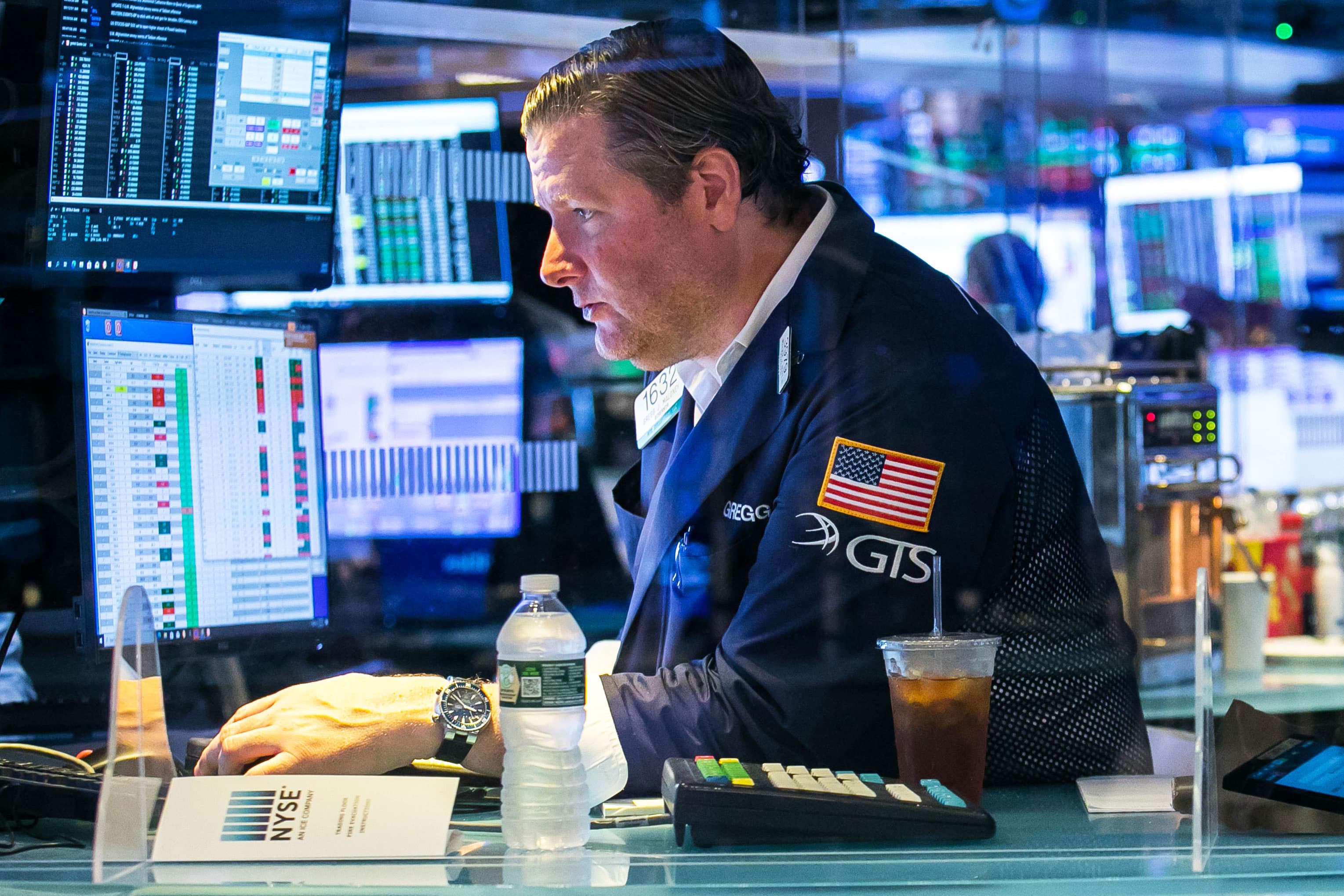
U.S. stock futures were slightly higher on Thursday as investors gear up for the second half of 2021.
Dow futures rose were higher by 64 points. S&P 500 futures added 0.1%. Nasdaq 100 futures ticked down less than 0.1%.
Premarket trading was relatively quite though shares of reopening plays cruise lines and retailers looked set to open higher. Energy stocks showed strength as West Texas Intermediate crude rose above $75 per barrel.
A stretch of strong economic news continued on Thursday as weekly initial jobless claims came in at 364,000, setting a pandemic-era low. Economists polled by Dow Jones are expecting initial claims for unemployment totaled 390,000 last week, after totaling 415,000 for the week ended June 19.
On Wednesday, the Dow Jones Industrial Average rose 210 points, helped by a 2.7% pop in Walmart. The S&P 500 registered a gain of 0.13% to close at a fresh record of 4,297.50. The Nasdaq Composite was the relative underperformer, dipping 0.2% as Facebook, Amazon, Netflix and Google-parent Alphabet closed lower.
The major averages closed out a strong first half of 2021 and second quarter on Wednesday.
For the year, the Dow is up 12.7%, hovering about 1.7% below its all-time high. The S&P 500 rallied 14.4% in the first half of 2021 and the technology-heavy Nasdaq Composite rose 12.5%.
The S&P 500 notched its fifth positive month in a row, rising 2.2% in June. The broad index also posted its best first half since 2019.
“Better news on Covid, vaccinations, re-openings, economic growth, and earnings fueled the advance. Nearly equal gains were achieved in both quarters by a rotation in leadership allowing broad participation,” said Jim Paulsen, Leuthold Group chief investment strategist.
The small cap Russell 2000 rose more than 17% in the first six months of the year amid a strong rotation into value stocks as the economy reopens from the Covid-19 pandemic. However, smaller companies and value stocks appeared to lose momentum in recent weeks while Big Tech stocks regained their footing.
Brent Schutte, chief investment strategist at Northwestern Mutual, said that he expected that reversal to prove temporary as the economic recovery continues.
“I think the inflation fears have kind of weighed in and had investors thinking that we may be further along in the cycle than I think we actually are. … I still think you have enough economic momentum that growth is going to stay strong, perhaps at a plateau, for the next year, which for me means you still want to be invested in things where earnings growth is more cyclical in nature,” Schutte said.
Similarly, Paulsen said that the path of inflation and economic growth should determine market leadership in the second half.
“If inflation fears do calm further and bond yields remain lower for longer, expect growth and technology stocks to continue leading the stock market higher. However, should strong economic growth aggravate inflationary worries and again force bond yields higher, correction fears may intensify, and leadership should be centered among cyclical stock sectors, smaller cap stocks and even international stocks,” Paulsen said.
Strong first halves for the stock market historically bode well for the remainder of the year. Whenever there has been a double-digit gain in the first half, the Dow and S&P 500 have never ended that year with an annual decline, according to Refinitiv data going back to 1950.
When the S&P 500 is up more than 12.5% to start the year, the second half has a median gain of 9.7%, according to LPL Financial data going back to the 1950s.
The most anticipated piece of economic news this week is Friday’s monthly jobs report. Economists expect 683,000 jobs were added in June, according to a Dow Jones survey.
Enjoyed this article?
For exclusive stock picks, investment ideas and CNBC global livestream
Sign up for CNBC Pro
Start your free trial now


